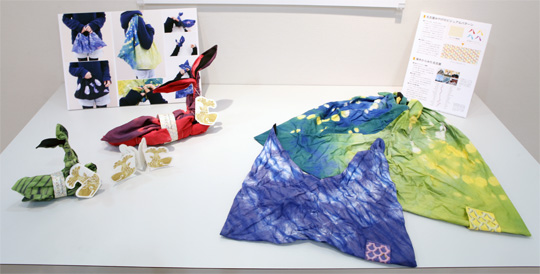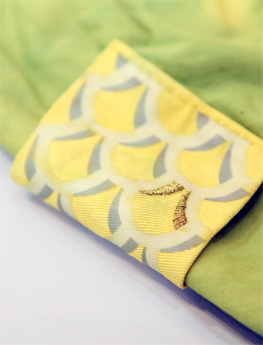

A Flamboyant, Incredibly Gorgeous City
There is a feeling in Nagoya, with its gold-clad dolphin-like kinshachi perched atop Nagoya Castle and its culture of extravagant weddings, of splendor and flamboyance, on the brink of bad taste. This unique feeling does not belong only to today’s Nagoya. Nobunaga Oda (1534-1582), who initiated the unification of Japan under the shogunate, was born in this region. We also see signs of this sense of splendor bordering on bad taste in the aesthetic of the gaudy clothes favored by Oda, which incorporated the luxury and opulence of articles imported to Japan by early European traders. We interpreted this idiosyncratic aesthetic value as part of what makes Nagoya culture special.
According to one survey, students from abroad see Nagoya as lacking originality. We realized that we needed to bolster Nagoya’s image, appealing on the basis of specific traits that differentiate it from neighboring cities. Because we were targeting not a national but an international viewpoint, we needed to clearly elucidate Nagoya’s unique characteristics. Therefore, in order to give a strong impression of our city, we proposed a souvenir based on Nagoya’s unique aesthetic value.
Nagoya Institute of Technology: Masatoki Suto
For our proposed Shachi-shibori souvenir, we received the unreserved support of Mr. Kondo and his son from their shop Chikakiyo-Shouten, which carries Narumi tie-dyed products; they taught us the techniques and allowed us to use their facility. Our team members worked hard, building on creative originality and trial and error in a bid to equal the enthusiasm of Mr. Kondo and his son in conserving their traditional industry, resulting in the Shachi-shibori souvenir.
Our research began at the Central Japan International Airport. What do students who are studying abroad in Japan see when they first set foot in Nagoya? How does this impression change over time? This project gave us the opportunity to gain firsthand knowledge of various aspects of today’s Nagoya, including the activities of the more than century-old traditional industries and local industries struggling with recession.
Our team also proposed a unified mark to help raise international awareness of the city of Nagoya by integrating the popular colors of the subway cars and the city’s symbol mark style. I felt that only students born and raised in, and proud of Nagoya could have come up with this proposal.
I also felt that the format of the workshop, “Thinking about Souvenirs”, in which mixed groups of Nagoya and Kobe students participated, was pretty good.
As a whole, I believe the participants were able to more clearly envision the future direction of this project due to the well-articulated representation of two elements: how each participant university would tackle the theme, and the regional characteristics of each city.